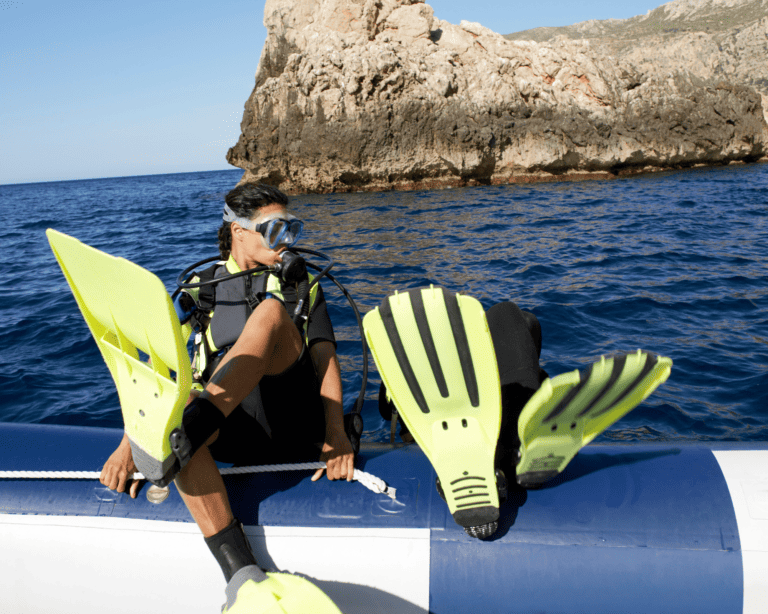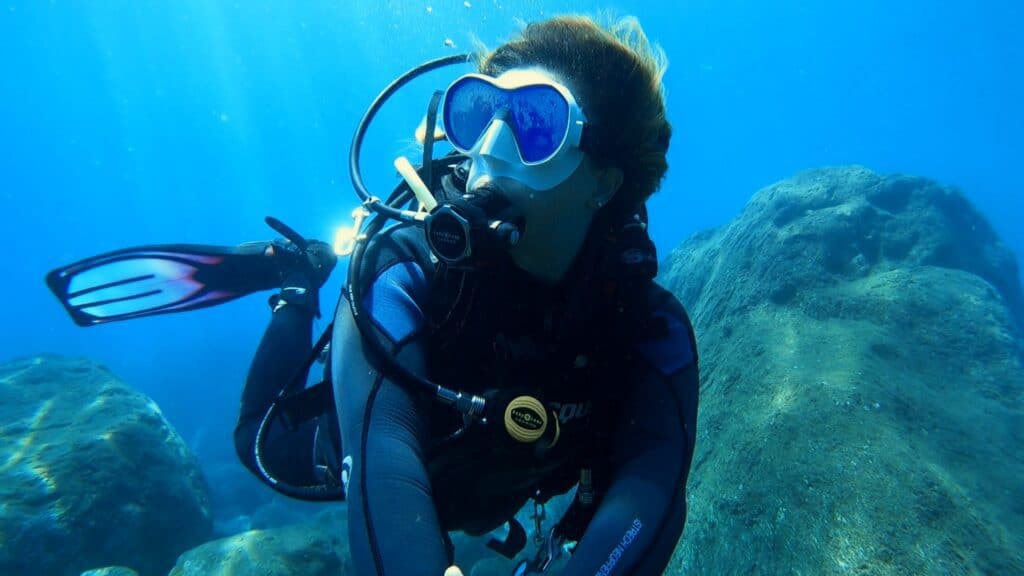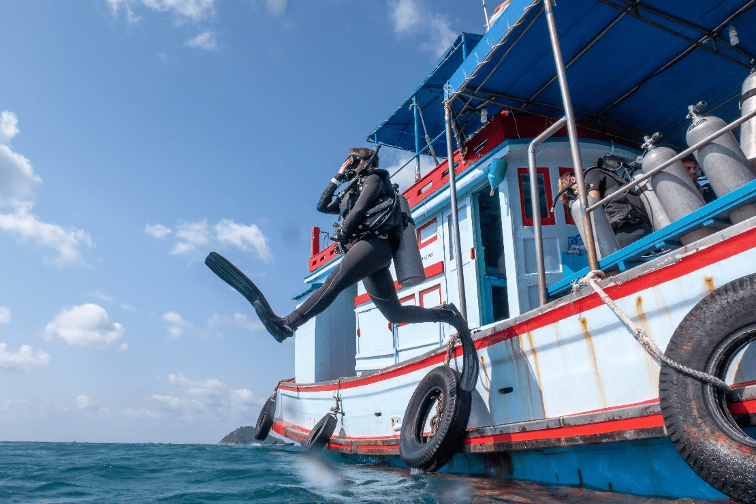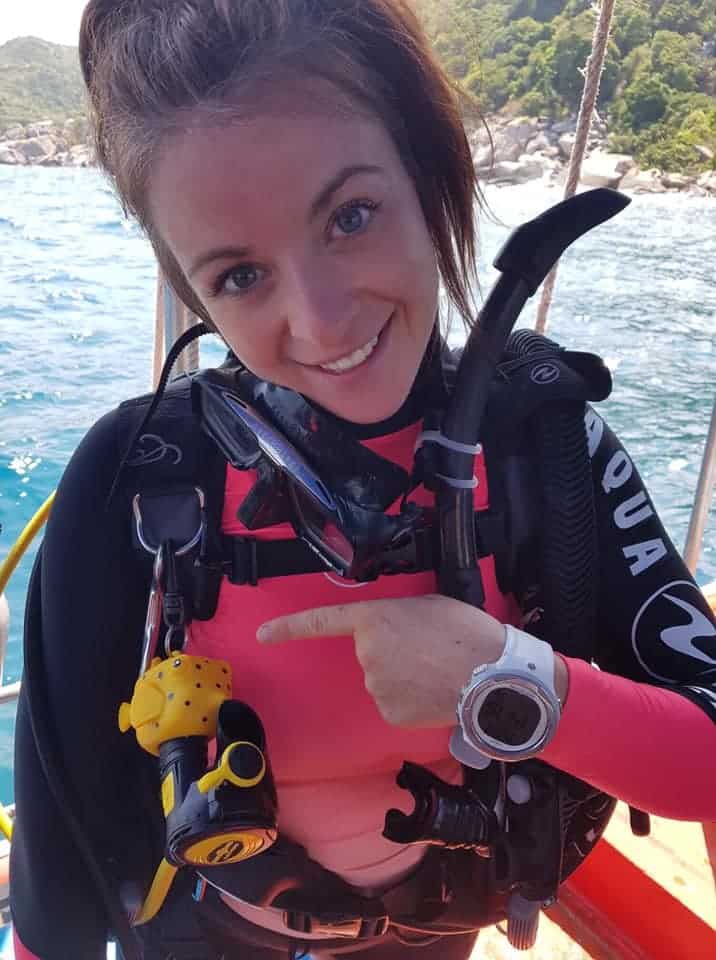If you’ve been watching scuba diving documentaries or you’re an aspiring scuba diver, you might be wondering why some scuba divers dive backward into the water.
Just like the diver down flag, decompression protocols, roll calls and dive buddies, it’s part of a safety measure.
There are times when the backwards roll is the safest way to enter the water. Read on as I explain the backwards roll and when to use it.
Table of Contents
Why Do Divers Use the Backward Roll?

Scuba divers dive backwards into the water as a standard safety technique; it’s one of a few circumstantial entry techniques. When on a low boat packed with other divers, falling backwards into the water is the quickest, most efficient and safest option.
It’s safe because it eliminates trying to squeeze around other divers, make a jump or trip over your fins.
You’ll be able to hold onto your equipment with one hand. The backward roll does take some practice, and you will want to make sure all of your scuba gear is secure.
What is the Backward Roll?
The backward roll in scuba diving is a technique where divers fall back into the water from low boats.
The back roll entry requires practice and all your equipment should be secure, you will need to put on your mask and regulator before beginning this headfirst dive backwards.
When to Fall Backwards in Scuba Diving?

The most appropriate time for a back roll entry is when you’re on a small boat. If there’s a lot of divers standing, it can be difficult to all enter the water. The backward roll enables you to easily enter from the side of the boat and also minimises rocking on the boat for a few divers yet to enter the water.
There are other ways to enter the water but for the mostpart, you will need a stable platform, if you use rigid inflatable boats and other small boats then rolling backward comes in handy and also keeps your tank and other gear untouched.
How to Backwards Roll
Mastering the backward roll takes plenty of practice but this easy-to-follow step-by-step will explain how it works:
Start in a seated position with your back to the water
Check the area is clear and ensure all safety checks have been done
Place your right hand over your regulator with your fingertips keeping your mask on
Your left hand will keep any loose hoses secure
As you tuck your chin closer to you chest you can start to fall backwards
Come back up to the surface as you prepare to dive with your buddies – don’t forget to give the “OK” signal to the boat!
Ensure your mask strap is tight enough before trying this technique, the last thing you want is to lose any expensive equipment.
Reasons for Different Entry Techniques
Reasons for alternating your entry generally comes down to the following:
Stable or unstable platform
Size of the boat
Your body
Your gear set up
Jumping into the water headfirst or feet first can sometimes increase risk of injury, especially for those that have existing conditions or prior injuries.
Are There Other Entry Techniques?

You’re not limited to one entry method, you can also use the following:
Giant Stride: The giant stride entry is when you step off the boat with a big step and fall into the water, feet first.
The Seated Entry: The seated entry depends on the height of the boat. You can use this on smaller boats. Get your feet over the other side of the boat and sit on the edge of the boat, before dropping into the water, avoid hitting the water too close to the boat. This is useful for gearing up in the water too.
Shore Entry: A Shore entry may sound the easiest, but in fact it’s often the trickiest. You should side step into the water, with all kit on apart from your fins and BCD inflated. Once you are safely in up to your waist, it’s time to don your fins. Remember, just like any other entry techniques, keep your regulator in your mouth at all times. Watch out for big waves, as they can easily knock you off balance.
If you wish to enter the water a different method to what is included in your dive briefing, make sure you chat with your Divemaster or dive leader to inform them of this.
Why the Backward Roll Entry is Safer
You can remain seated on the boat with your heavy scuba gear
Your tank hits the water during big jumps
Less impact with the back roll
Hitting water feet first can damage fins and equipment
Facing the water means the tank valve can hit the back of your head
A feet first dive can mean you don’t hit the water accurately and cause injury (nothing life threatening but can hurt some with prior injuries)
Keep your diving gear safe
It minimises the rocking motion for others on the boat
When Rolling Backwards isn't an Option
A backwards fall doesn’t work when you’re on larger boats with a deck at height or if you have loose gear that you can’t hold on to.
This is a preferred method for those with diving experience that are on smaller boats and are comfortable with the backward roll technique.
Ensure you safely enter the water accurately with your gear safe and your face mask on tight enough.
Summary
If you want to fall backward into the water then be sure to give the ok sign once you’re in safe. Also be sure that you already have experience with the back roll technique and have been shown by a Divemaster or instructor.
Keep everyone on board the dive boat comfortable, your scuba equipment safe and avoid a belly flop with this measured falling backward.

